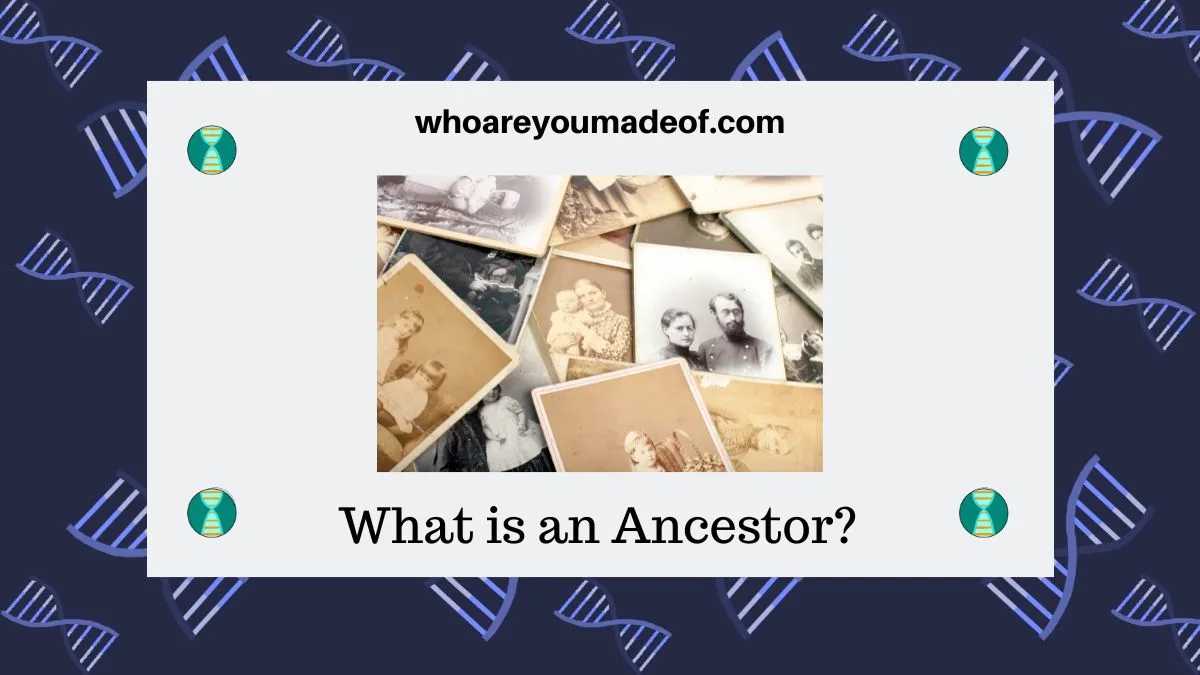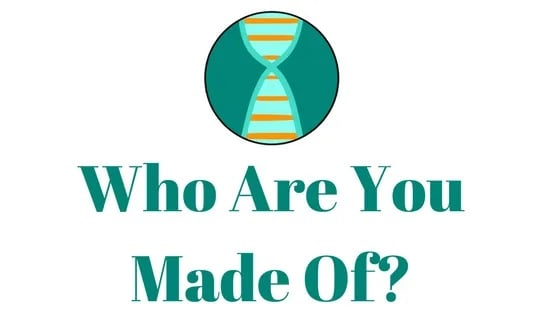Have you been wondering about your ancestors? In this post, learn what an ancestor actually is, which relatives are not your ancestors, and much more.

Most of our life is spent thinking about and taking care of our descendants, especially our children and grandchildren. If we are lucky, we get to know some of our ancestors.
If you are thinking about building your family tree, or have taken a DNA test, you might think more about your ancestors than most people do.
Knowing exactly what an ancestor is, how many of them you might have, as well as who isn't considered to be an ancestor, is crucial for understanding your family tree.
What is the meaning of an ancestor?
An ancestor is someone from whom you are descended. The term can also include the siblings of the people from whom you are descended.
A more relaxed definition of the word might include anyone who is related to you that lived a long time ago.
Most people use the word "ancestor" to describe someone far back in time in their family tree, but of course the technical definition of ancestor includes our more recent ancestors like our parents and grandparents.
What types of ancestors are there?
Everyone has two types of ancestors: direct lineal ancestors and collateral ancestors. Direct lineal ancestors are the easiest to understand because they are people from whom you are directly descended.
Collateral ancestors are the siblings of your direct lineal ancestors. You are not descended from them, but they are still related to you because they were the brothers and sisters of any of your ancestors.
Who is considered to be an ancestor?
Examples of direct lineal ancestors include your parents, grandparents, great-grandparents, great-great grandparents, and so on. There is no generational limit to who can be your ancestor, as long as there is a direct, unbroken line between you and the ancestor.
Siblings of your ancestors are called collateral ancestors because you are not descended from them. Your collateral ancestors are the heads of collateral lines of your family tree, the generations of cousins descended from the siblings of your ancestors.
Any sibling to your ancestor is known as a collateral ancestor. This could be an aunt, a great-uncle, a sibling to your great-grandparent, or any sibling to any ancestor going back an unlimited number of generations.
Does everyone have ancestors?
Every single human on earth has ancestors. This is amazing to think about because no matter who we are, where we come from, what type of lives we have led, or how we view ourselves, we are all special because we are descended from a unique combination of ancestors.
There is a human being to fill in every spot in your family tree, whether you know who they were, and those people all came together to make you.
Are you an ancestor of anyone?
If you have children or grandchildren of your own, you are an ancestor. Many people are fortunate enough to live to see their great-grandchildren, and possibly even their great-great grandchildren.
There are a few instances of people living long enough to meet even meet their fifth generation of descendants. Several years ago, I remember reading about a 92-year old Canadian woman who lived to see the birth of her great-great-great grandchild.
Surprisingly, this is not the world record. The record is held by a 109-year old great-great-great-great grandmother named Augusta Bunge from the United States, who also happens to hold the record for being the youngest great-great-great-great grandparent.
This is pretty remarkable. I went back through my family tree to see how old my 4th great-grandparents would have been if they had survived to see my birth, with the ages ranging from 139-181.
Regardless of whether we live to see all of the generations born to our children and grandchildren, all of their descendants will have you as an ancestor. You will be a direct lineal ancestor to all of their descendants, and you will be a collateral ancestor to the descendants of your siblings.
Which relatives are not considered to be ancestors?
We don't usually consider the descendants of our collateral ancestors to be ancestors. These relatives are our cousins.
For example, your aunt is a collateral ancestor. Her child is your first cousin. The brother of your great-grandfather (your great-grand uncle) is your collateral ancestor, yet his grandchild is your first cousin once-removed.
We can have any number of collateral ancestors and they can be any cousin type, from 5th-cousins six times removed, to 15th-cousins eleven times removed, and beyond. They are all our cousins and are related to us, but they are generally not referred to as ancestors.
How many ancestors can a person have?
The exact number of ancestors that you have in total cannot be known for sure. However, you can calculate the number of ancestors that you have in each generation by multiplying the number of ancestors in the previous generation by two.
For example, you have 2 parents, so you have 4 grandparents, 8 great-grandparents, and 16 great-great grandparents. If you keep this up, you will have 1024 8th great-grandparents.
Some people like to calculate the number of ancestors going back even further, with the estimated number of ancestors at 27 generations (to about the 1300s CE) is 134,217,728. This number is higher than the population in most places in the 1300s, which means that our exact number of ancestors at that distance is probably affected by pedigree collapse.
Conclusion
I hope that this article has helped clear up any confusion that you may have had about ancestors and who exactly they are to you.
If you have any questions about something that you read in this post, or if you would like to ask your own story about an ancestor, I would love to hear from you in the discussion below.
Thanks for reading today!
